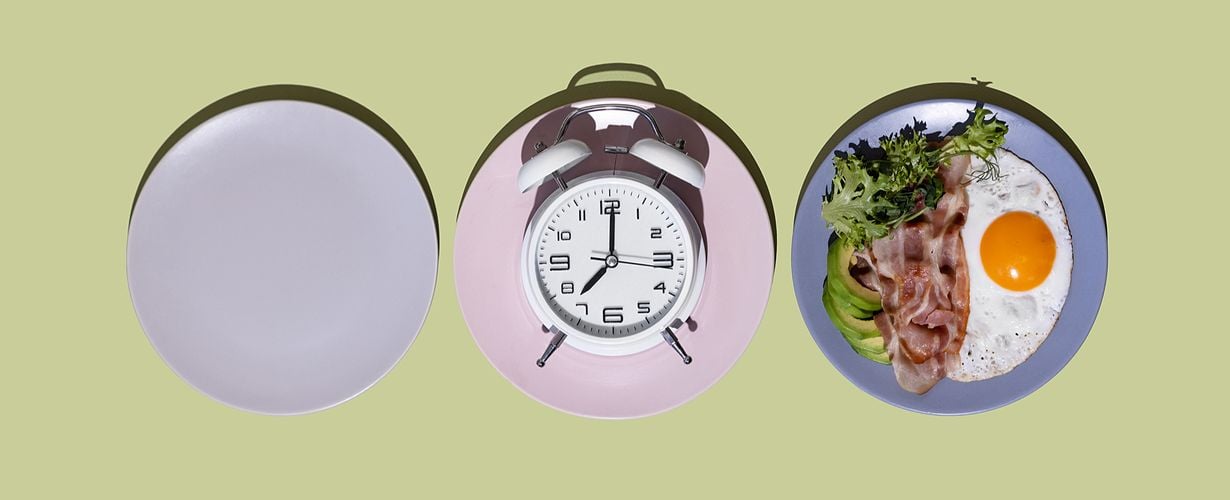Vitamin D: Why You Need it and How to Make Sure You are Getting Enough
Almost half of the nation's adults and 70 percent of American kids aren’t getting enough vitamin D.7 Insufficiency is almost never diagnosed, yet it is linked to many cancers, hypertension, chronic pain, depression, autoimmune disease, and so much more. Vitamin D (25-hydroxy vitamin D), not actually a vitamin, is a hormone synthesized in our skin when exposed to sunlight. The vitamin D endocrine system is complex and not only involves the skin, but also the liver and kidneys. When the skin is exposed to ultraviolet radiation, cholesterol helps to produce pre-vitamin D3, which is later transformed in the liver and kidneys to be used by the body. It is essential for calcium absorption, bone health, regulates many cellular functions, reduces inflammation, improves brain and muscle function, and supports the immune system. Although vitamin D is essential for overall well-being, it is even more important to optimize levels as we continue to navigate the impacts of the COVID-19 pandemic.
Vitamin D Deficiency
Vitamin D deficiency is now thought to be one of the most common medical conditions in the world, affecting an estimated one billion people, especially black and Hispanic communities. One of the biggest reasons people suffer from low levels of vitamin D is a lack of sunlight – which is even more difficult to achieve in the winter months.10,2 Below are the most common reasons someone may be deficient in vitamin D3:
Lack of sun. Sedentary lifestyles and increases in screentime have kept most people indoors, lowering their vitamin D levels. For some, occupation is a huge obstacle. Those who work inside all day, or even on shift work hours, have reduced outdoor time. Additionally, for those that live in a northern climate, getting enough daylight during the winter months is one more challenge that can lead to the risk of developing a low level of vitamin D or deficiency. It’s called the sunshine vitamin for a reason!
Overuse of sunscreen. While the risk of developing skin cancer is significant, research has found that wearing sunscreen does reduce the body’s ability to make enough vitamin D by 90 percent.9
Underlying health conditions. Certain health conditions, such as diabetes, Crohn’s disease, celiac disease, cystic fibrosis, kidney and liver disease, and obesity can alter various mechanisms associated with vitamin D, making achieving optimal nutrient status difficult.1
Having darker skin. Research shows that more than 90 percent of Americans with darker skin pigmentation, including African-Americans, Hispanics, and Asians, suffer from low levels of vitamin D when compared to the Caucasian population.1
Aging. Aging reduces vitamin D production in the skin because there is a decrease in 7-dehydrocholesterol, a precursor to vitamin D3, in the skin and a reduced response to ultraviolet light.4
Symptoms of vitamin D deficiency include (but are not limited to):
- Fatigue
- High blood pressure
- Depression and mood disturbances
- Poor skin health
- Insomnia
- Joint pain
- Difficulty concentrating
- Hair loss
- Chronic muscle or bone pain
Vitamin D is also intimately connected to the immune system, and when levels are low, our bodies become more susceptible to viruses, infections, and systemic inflammation. Research suggests that vitamin-D deficiency may be one reason people get more colds and flu in winter when it’s difficult for the body to get enough sunshine to make sufficient vitamin D3.2 Its immune-boosting power may also help explain the protective relationship between sufficient vitamin D blood levels and reduced risk of cancer.8
Vitamin D Deficiency and Chronic Disease
While the specific mechanisms are still unclear, there are a number of studies that correlate optimal vitamin D levels with improved markers of inflammation and reduced risk for chronic disease.2 However, the opposite is also true. Vitamin D deficiency can increase the risk of developing many health conditions including:
- Cancer
- Autoimmune disease
- Osteomalacia or osteoporosis
- Heart Disease
- Diabetes
- Arthritis
- Fibromyalgia
The common thread among many of these diseases is systemic Inflammation. Inflammation is the immune system’s response to a stimulus that is viewed as dangerous, foreign, or toxic in order to defend and protect the body. There are important chemical messengers like cytokines, chemokines, prostaglandins, and leukotrienes that help control this immune and inflammatory response. This response is most often acute but can become chronic. At times, the body can become either hyperreactive or underactive and this can impact how much inflammation your body is dealing with and for how long. When you have prolonged release of these inflammatory molecules, it can contribute to the development of inflammatory conditions.
Vitamin D is an immune modulator, meaning it regulates genes involved in inflammation and acquired and innate immune responses. It is thought that vitamin D specifically works to regulate inflammatory molecules like cytokines and TNF (tumor necrosis factor), inhibiting the progression of diseases. One study found that after five years of vitamin D supplementation, subjects had a reduction in inflammatory autoimmune diseases by 22%.5
How to Boost Your Vitamin D
Because of the growing connection to some of the leading causes of death in the US, it is important to be aware of vitamin D deficiency solutions, especially for older adults, and those with darker skin or certain health conditions.
You can get vitamin D from sun exposure, food, and nutritional supplements. There is no uniform consensus on how much vitamin D people require. In a conventional setting a vitamin D level between 20-40 ng/ml is adequate, but in functional medicine and at CCFM, we like to see a level between 40-70 ng/ml – much higher! A higher level of vitamin D helps protect against serious health conditions and pushes the body from functioning to functioning optimally. It can be challenging to maintain adequate vitamin D levels without regular sun exposure or supplementation, but there are ways to help boost your levels:
Sunlight Exposure 
Obtain fifteen to twenty minutes of mid-day sun at least three days per week. This is when UVB rays (which are required to synthesize vitamin D) are at their strongest. In other words, this is when you can make maximum vitamin D with minimum sun exposure.
Diet
Consuming nutrient-dense foods that are high in vitamin D can also help support sufficient vitamin levels. Although many foods like sugary breakfast cereals are “D-fortified,” the best natural sources of vitamin D are:
- Cod-liver oil
- Fatty fish like canned salmon, sardines, and mackerel
- Egg yolks
- Oysters
- Beef liver
- Shiitake mushrooms
Supplementation
Most people require somewhere between 2,000-5,000 international units (IUs) per day of vitamin D3 supplementation to achieve the optimal blood level range of 40-70 ng/ml. We recommend taking a D3 supplement that also contains vitamin K2 for optimal absorption. Please check with your functional medicine provider to see which supplement may be right for you.
Is a Vitamin D Supplement Right for Me?
While making vitamin D from sunlight exposure seems like the easiest way to get vitamin D, it may not be the most efficient way. As mentioned, there are a variety of things that can block vitamin D synthesis, such as the increased use of sunscreen, impaired intestine health, geographical location of residence, age, weight, and ethnicity. We still recommend safe daily exposure to sunlight, but it’s likely that you may need a little extra support to maintain adequate vitamin D levels.
For those struggling to produce or consume enough vitamin D, a nutritional supplement may help. As stated, most providers consider vitamin D levels above 20-25 ng/ml sufficient enough, but in practice, we have found that most people do best with vitamin D levels above 30 to 35 ng/ml. Supplementing with vitamin D can range in dose anywhere from 500 international units (IU) to 50,000 IU.
Before starting on a vitamin D supplement, it’s important to know what your level is without supplementation. Knowing your level helps your healthcare provider make a more accurate recommendation. If your level is below 30, we typically recommend starting with 5,000 IU (or 125 mcg) of vitamin D3/K2 per day and then retesting in 90 days. If your blood level is below 20, we might recommend a higher dosage of 10,000 IU (250 mcg) per day for 30-45 days and then reducing down to 5,000 IU of vitamin D daily after that. It is a dance of testing, supplementing, and then re-testing again to figure out each person’s unique needs. We recommend testing at least twice per year - once after winter when sun exposure has likely been less, and then again after summer. By knowing those two levels at different times of the year, you can supplement appropriately.
Pros of Taking Vitamin D
As explained above, there are significant benefits to having an adequate amount of vitamin D. It is protective against many diseases, keeps your body functioning optimally, and can even help with cognitive health.3 Healthy vitamin D levels may also reduce systemic inflammation. Research published in the Journal of Immunology in 2012 found that vitamin D turns on a gene that interferes with the inflammatory response. In addition, vitamin D has been associated with improved sleep and mood, as well as oral health and muscle maintenance.
Cons of Taking Vitamin D
As a whole, appropriate amounts of vitamin D are highly recommended to address the body’s needs. However, if you are taking too much vitamin D in supplement form, it can lead to toxicity and some negative effects can arise, including:
- Poor appetite and weight loss
- Muscle weakness
- Constipation
- Kidney stones/kidney damage
- Confusion and disorientation
- Heart rhythm problems
- Nausea and vomiting
In general, once your vitamin D level gets above 80, you can back off supplementation and monitor your blood level regularly.
Takeaways
In conclusion, it may be beneficial to seek medical advice so you can evaluate your vitamin D status, especially if you are suffering from one of the symptoms or conditions listed above. After reviewing your results, speak with your functional medicine provider to see which approach to increasing your vitamin D intake is best for you and your lifestyle. If you don’t have a functional medicine provider, reach out to CCFM to see if we are a good fit for you.
You can learn more about vitamin D in a recent article we supported in Eat This, Not That!.
References
- Adams, J. S., & Hewison, M. (2010). Update in vitamin D. Journal of Clinical Endocrinology and Metabolism, 95(2), 471-8. http://dx.doi.org/10.1210/jc.2009-1773
- Bartley, J. (2010). Vitamin D: emerging roles in infection and immunity. Expert Review of Anti-infective Therapy, 8(12), 1359-69. http://dx.doi.org/10.1586/eri.10.102
- Charoenngam N, & Holick, M. F. (2020). Immunologic effects of vitamin D on human health and disease. Nutrients, 12(7), 2097. http://dx.doi.org/10.3390/nu12072097
- Gallagher, J.C. (2013). Vitamin D and aging. Endocrinology and Metabolism Clinics of North America, 42(2), 319-32. http://dx.doi.org/10.1016/j.ecl.2013.02.004.
- Hahn, J., Cook, N. R., Alexander, E. K., Friedman, S., Walter, J., Bubes, V., Kotler, G., Lee, I. M., Manson, J. E., & Costenbader, K. H. (2022). Vitamin D and marine omega 3 fatty acid supplementation and incident autoimmune disease: VITAL randomized controlled trial. British Medical Journal, 376. http://dx.doi.org/10.1136/bmj-2021-066452
- Jeffery, L. E., Wood, A. M., Qureshi, O. S., Hou, T. Z., Gardner, D., Briggs, Z., Kaur, S., Raza, K., & Sansom, D. M. (2012). Availability of 25-hydroxyvitamin D(3) to APCs controls the balance between regulatory and inflammatory T cell responses. Journal of Immunology, 189(11), 5155–5164. https://doi.org/10.4049/jimmunol.1200786
- Kumar, J., Muntner, P., Kaskel, F. J., Hailpern, S. M., Melamed, M.L. (2009). Prevalence and associations of 25-hydroxyvitamin D deficiency in US children: NHANES 2001-2004. Pediatrics, 124(3), 362-70. http://dx.doi.org/10.1542/peds.2009-0051
- Martens, P. J., Gysemans, C., Verstuyf, A., & Mathieu, A. C. (2020). Vitamin D's effect on immune function. Nutrients, 12(5), 1248. http://dx.doi.org/10.3390/nu12051248
- Norval, M., Wulf, H.C. (2009). Does chronic sunscreen use reduce vitamin D production to insufficient levels? British Journal of Dermatology, 161(4), 732-736. http://dx.doi.org/10.111 1/j.1365-2133.2009.09332.x
- Sizar, O., Khare, S., & Goyal, A., & Givler, A. (2022, November 4). Vitamin D deficiency. National Center for Biotechnology Information. https://www.ncbi.nlm.nih.gov/books/NBK532266/






